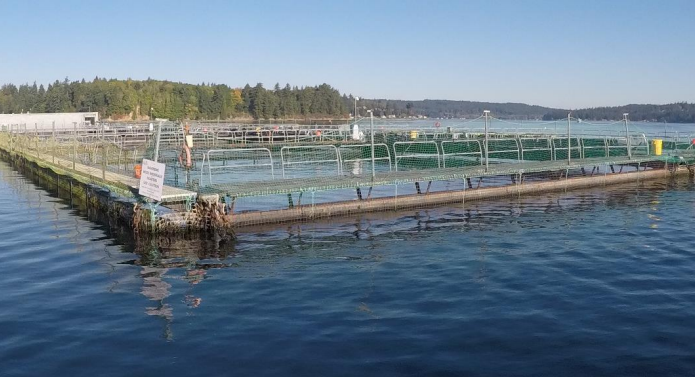A “complicated and uncertain regulatory environment” and a “lack of public awareness and understanding of the role seafood farming” may be holding back US Atlantic salmon production.
SalmonBusiness talked to Michael Rubino, Fisheries director of the office of aquaculture for the National Oceanic and Atmospheric Administration (NOAA) about the US’s plans for salmon farming.
US Atlantic salmon production. It’s complicated. On one hand The New National Oceanic and Atmospheric Administration (OAA) director Chris Oliver, said at a Q and A session in Juneau, Alaska that “wild harvests can’t keep up with global demand.” However in September, a U.S. District Judge halted a plan that would have allowed, “for the first time, industrial aquaculture offshore in U.S. federal waters.”

But despite state multiple bans on fish farms president Trump is seeking an overhaul in federally controlled waters. And throughout November the U.S. Commerce Department has held meetings around the country to talk about its strategic plan for fish farms.
Indoor
As two Norwegian firms race to build two of world’s largest inland salmon aquaculture facilities in the USA, SalmonBusiness wondered if American salmon farming’s status on the international stage could be elevated?
This week, Atlantic Sapphire reported that it had successfully completed its first 90-day onsite hatchery trial at its future land-based Atlantic salmon farm near Miami, Florida, on course to finish its first harvest in the third quarter of 2020. Over 1700 miles north in Maine, Nordic Aquafarms held a grand opening of the Belfast office, with construction of the a $400 million land-based salmon farm in Belfast next year. SalmonBusiness wondered if the NOAA were keeping an eye in how both projects pan out?
“As aquaculture continues to play an important role in global food production a variety of technologies and systems will be needed to meet the demand for seafood” answered Rubino in an email to SalmonBuiness. “Recirculating systems, like those in Maine and Florida, are one method of aquaculture while other producers are looking to expand in offshore and nearshore marine waters, as well as making better use of existing freshwater ponds for aquaculture.”
Open door
The United States imports more than 80 percent of the seafood it eats and about half of this imported seafood is from aquaculture. It’s home to major commercial fisheries for species such as Pacific salmon and New England lobster yet it relies on salmon imports from countries such as Chile or Canada. SalmonBusiness wondered if Rubino envisaged commercial salmon farms in the US?
“A form of salmon farming is well established in the Pacific Northwest and in Alaska: salmon hatcheries supply 80-90% of the salmon harvested in Pacific Northwest and about 40% in Alaska. The State of Washington recently banned net pen farming of Atlantic salmon, but the door remains open to farm native species in Washington State waters such as steelhead and sablefish,” said Rubino.
Complicated and uncertain regulatory environment
But looking ahead what are the biggest challenges ahead for US salmon production, is there a will to produce more home grown produce – or is importing a long term goal?
“The US has vast areas of marine waters and land based locations to produce seafood such as salmon along with mollusks, crustaceans, and seaweed. Challenges include the need for social license (for example, conflicting uses in coastal waters such as recreation, fishing, and real estate development), a complicated and uncertain regulatory environment, and lack of public awareness and understanding of the role seafood farming could play in the production of one of the most efficient and (if done responsibly as it is in the US) sustainable forms of protein,” added Rubino.

